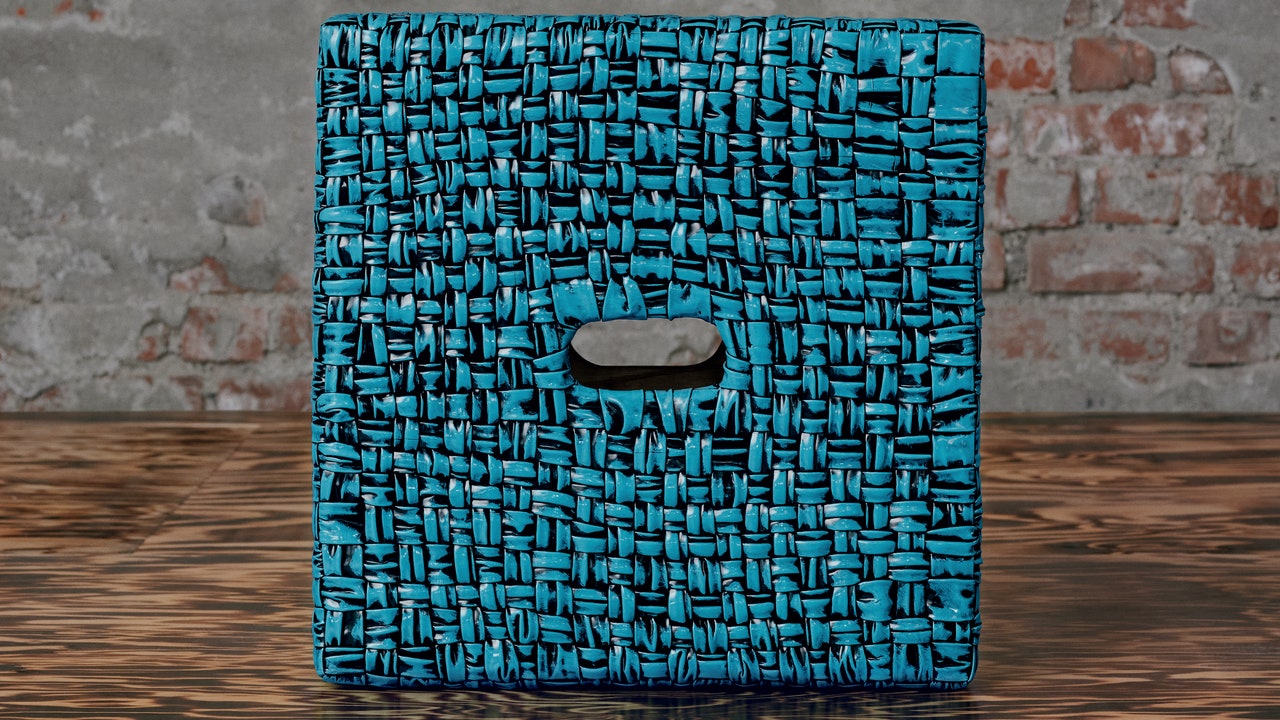During “On The Rocks,” Blazy and Bottega Veneta will also reveal what happens when you wrap the LC14 Tabouret in the house’s signature Intreccio Foulard technique – and then dye that woven leather in shades that really sing, like red, yellow and turquoise. blue, and a shade the house calls rain tree green. Then – yes, there is another one – the black is painted over, creating a seductive and strange interplay between color, non-color and craft. All leather work was done in Bottega’s workshops in Montebello, near Vicenza, Italy. Perhaps unsurprisingly, given the craftsmanship involved, this is all a very limited edition: 100 of the scorched wood, 60 total of the woven leather. (Don’t even ask me about the cost. I was afraid to ask. I really want one of the raintree green leather ones, but I don’t have a spare kidney on hand.)
What really emerges from all these wonderful experiments is that whatever you do to the LC14 Tabouret – burn it, cover it in leather, apply cheerful colors – the essential line saving, durability and unadorned functionality remain unchanged. That’s fitting, considering – brief backstory here – the play’s origins. Le Corbusier found it as a Scotch whiskey crate washed up on the beach near his small experimental Cabanon house in Roquebrune-Cap-Martin on the Côte d’Azur in France; Modernists used to enjoy nothing more than seeing what could be done to make small living spaces comfortably habitable. (Says Blazy: “I find it fascinating that Le Corbusier chose this fisherman’s style hut for his own home, built by traditional carpenters. Despite his famous comment about a house being a ‘machine for living in’, he was drawn to something pure , simple, tangible, handmade.”) Le Corbusier then reworked his found object into a new version in 1952. The rest is, literally, history.





